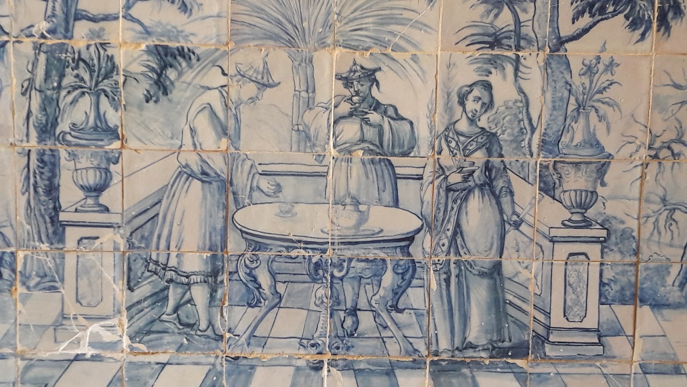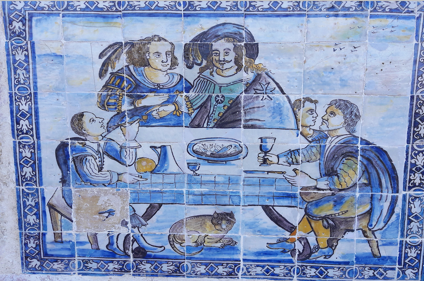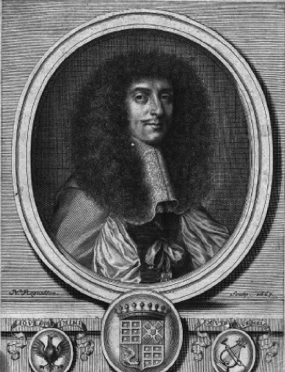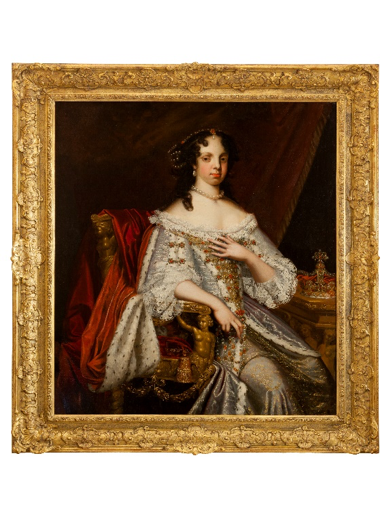
Figure 1: Portrait of Queen Catherine of Braganza, attributed to John Riley, c. 1670-1674, Inventory No. FMA 206, Arquivo Fundação Medeiros e Almeida,© Museu Medeiros e Almeida, Lisbon / Pedro Mora
Historiography
The first chronologically source is the poem by Edmund Waller (1606-1687), a famous writer and politician in the English court of the period. Entitled “Of Tea, Commended by Her Majesty,” the poem conventionally dates from the Queen’s twenty-fifth birthday on November 25, 1663. In fact, after Catherine’s arrival in England, the court always honored the Queen’s birthday with great festivities, along with other celebrations, which started precisely on the day of Saint Catherine of Alexandria and ended on May 29, the birthday of King Charles II.
Of Tea Commended by Her Majesty
Venus her myrtle, Phoebus has his bays
Tea both excels, which she vouchsafes to praise,
The best of Queens, the best of herbs we owe
To that bold nation which the way did show
To the fair region where the sun does rise
Whose rich productions we so justly prize
The Muse’s friend, tea does our fancy aid,
Repress those vapours which the head invade
And keep the palace of the soul serene,
Fit on her birthday to salute the Queen
(Thomas 1965:99).2
The second reference is English author Agnes Strickland’s monumental work, whose eighth volume is dedicated to the Portuguese queen and her life in England. In it, Catherine of Braganza is relieved of the pious and sterile image that the British historiographic tradition had formed of her. Basing herself on Edmund Waller’s poem describing Catherine’s arrival at Hampton Court, the author wrote:
It is probable that they then partook of Catherine’s favourite beverage, tea, which became a fashionable refreshment in England soon after her marriage with Charles II, though not exactly introduced by her. Yet, as Catherine of Braganza was certainly the first tea-drinking Queen of England, she has the credit of setting the fashion for the use of that temperate beverage, in an age when ladies, as well as gentlemen, at all times of the day, heated or stupefied their brains with ale or wine for the want of the more refined substitutes of tea, coffee and chocolate. (Strickland 1845:310)
In the twentieth century, American researcher Gertrude Z. Thomas definitively rehabilitated Catherine’s stay in England by attributing to her the responsibility for a change in the decorative arts scene. In fact, the book Richer than Spices is a milestone in the study of Portuguese cultural contribution in England after 1662. In chapter seven, the author studies tea in its cultural and economic context, thereby establishing the civilizational influence of the Portuguese Princess: “Yet while Catherine practiced their English ways with a Portuguese accent, English ladies learned enough Portuguese ‘housewifery’ from Catherine to brew a cup of tea solely for pleasure” (Thomas 1965:93-115).
Portuguese and foreign authors studying the subjects of food and the dining table have followed this line of thought when it comes to tea, against the background of the profound influence exerted by the east on Portuguese culture (Marques 2007: 23).
Tea and the East: “Fair Region where the Sun Does Rise”
The first reference to tea in Portuguese literature is owed to the Dominican monk Friar Gaspar da Cruz, “a man of letters and good living,” who visited China in the sixteenth century. This reference appears in his work Tratado em que se contam muito por extenso as cousas da China com suas particularidades . . . [A thorough account of China and its particularities . . .].
In chapter eight, entitled “Dos Trajos e Usos dos Homens [On the Attire and Customs of Men],” Cruz wrote:
The honourable and the noble display innumerable courtesies at the table, pouring and serving one another drinks, for drinking is paramount at the table... Anyone arriving at a gentleman’s home is customarily served a cup on a fine tray containing a warm water that they call cha, a somewhat reddish and exceedingly medicinal beverage that they habitually drink, made by boiling somewhat bitter herbs: in this manner they commonly entertain those deserving of respect, acquaintances and strangers alike, and I have often been offered it. (Cruz 1569:92)
This valuable testimony and the fact that the work was published under the patronage of Cardinal Henrique suggest the rapid spread of Chinese culture and its ceremonies, an auspicious fact for the dissemination of the consumption of tea in Portugal. However, this does not seem to have actually been the case.
In fact, over fifty years after the publication of the Tratado, Father João Rodrigues, the interpreter (Tçuzzu) (Prazeres 2012:87-94), wrote the História da Igreja do Japão [History of the Church in Japan] in which the subject of the tea ceremony once more appears (Rodrigues 1620-1630:437). In her PhD thesis on Namban art, Alexandra Curvelo Campos carried out an in-depth study of the Jesuits in Japan, revealing that the missionaries observed the tea ceremony and adopted it as “a practice of adaptation or accommodation aimed at obtaining the most conversions possible, starting from the top of the social pyramid... and all the society’s residences were supposed to have their chanoyu” (Campos 2007:264). This led me to consider exploring the Society of Jesus as one of the likely routes for the introduction of tea into Portugal, because the Portuguese royal family, particularly the Braganza Dynasty, always had Ignatian confessors, such as Father António Vieira (one of the confessors of King João IV), Father João Nunes (confessor of D. Luísa de Gusmão [Franco 1717:431]), and Fathers António Fernandes and Manuel Pires (Catharine’s confessors in England and then in Portugal [Troni 2008:269-288]). However, according to contemporary sources for the biography of these priests, as well as for the history of the Jesuit Colleges in Portugal (Lima 1972:57), there is no mention of the consumption of tea nor of the existence of a specific space allocated for the tea ceremony.
I have also researched the Order of Santa Maria da Arrábida, as some of its members accompanied the Queen to London, although their references to food are limited to the ingestion of jugs of water, “wine-soaked biscuits . . . for the soothing of distress,” and the mastication of sage and wormwood leaves “for medicinal purposes, to deceive the body with the spirit, mortifying the former with their bitterness to sustain the holy life in it” (Piedade 1728:365; Maria, 1737:89). Besides these two approaches, I have tried a third to check whether there was any extant information in the documentation as to expenditures, with the royal larder referring to the arrival of tea shipments. This procedure, however, yielded no results.3 I have also looked at diplomatic documentation in order to discover the most relevant habits and products in Portuguese everyday life, especially concerning the royal family. For instance, on November 7, 1642, the French Resident in Lisbon, François Lanier, recorded that King João IV retired to dine [lunch] with the queen and their children, a fact which he praised as a sign of the king’s affection for his family (Demmerson 1996:739-797). As for Queen Luísa de Gusmão, she had a diminutive chambermaid “in charge . . . of filling the water jugs” (Lourenço 1999:182).
The correspondence between the first Marquis of Niza-Vasco Luís da Gama (1612-1676), the ambassador of King João IV to France-and Vicente Nogueira (1585-1654), an official of the Roman Curia, are equally relevant in this context, particularly the offering of food items by the marquis to Vicente Nogueira. When the correspondence is read, it is apparent that the priest was very fond of consuming sweets sent to him in boxes via Livorno. Certain excesses had caused him stomach problems, which he treated with a diet consisting of “a plate of boiled Marseille plums, finished off with a roasted pear or peach; after the conserve, I drink four ounces of very clean water” (Serafim and Carvalho 2011:141).4 Water is constantly mentioned, and Vicente Nogueira fondly remembers a spring near the Castle of Lisbon as “all that my body hankers for from Portugal.” This is why he is so demanding concerning the shipment of water. In all this documentation, there are two noteworthy details: cinnamon as a multipurpose product from the East, and the ingestion of scented waters. Furthermore, Vicente expatiates at length about wine, a drink that the Italian preferred to water, but there is no reference to tea in his letters.
Agasalho5 [hospitality] Culture in Portugal
Another approach for gauging whether tea was consumed in Portugal in the seventeenth century was to analyze the country’s generally accepted etiquette for receiving guests. How were guests entertained in Portugal in the period immediately following the country’s restoration from Spanish rule? Bluteau, for instance, explains that agasalhar “is to host with love . . . the same as a courteous and pleasing welcoming of a guest to one’s home” (Bluteau 1712:174). In September 1662, the arrival in Portugal of Lady Fanshaw, the wife of the English ambassador extraordinary Sir Richard Fanshaw (1608-1666), sheds further light on how the Portuguese received guests at the time. Upon her arrival, the abbess of the Convent of Alcântara [Madre Soror Maria da Cruz], the queen mother’s niece, sent Lady Fanshaw scents, waters, and sweets, and Luís de Vasconcelos e Sousa, the third earl of Castelo-Melhor (1635-1720), sent her a silver-decorated basket made of brazilwood, containing silver-ornamented crystal flasks with amber-fortified water. In her memoirs, Lady Fanshaw does not mention the drinking of tea, but she praises the fruit.6
Seven years later, the visit of Cosimo de’ Medici (1642-1723), the future duke of Tuscany, was to present a new opportunity to examine Portuguese hosting strategies and material culture (Flor 2016:1-37). The prince entered Portugal through the Alentejo and visited Estremoz, where the chief attraction was a pottery producing the famous fine red clay jugs that were much appreciated in the country.7 One of Cosimo de’ Medici’s biographers, Lorenzo Magalotti, compared the aroma of the jug to “the Earth’s irreplaceable incense in the first days of its creation, all of it watered by the first aromas of the air, before the virgin waters of sources and rivers . . . What a fragrance, what paradise in earth and air!” (Marchisio 2004:302).
Water drunk from jugs seems to have been a distinctively Portuguese habit, to such an extent that broken jugs were turned into dust that could be used for brushing teeth or for scenting drinking water. These objects appear in contemporary paintings by such artists as Josefa de Ayala e Cabrera (1630-1684), the renowned Josefa d’Óbidos.
Tile painting also offers an interesting testimony on this subject. In the gardens of the Fronteira Palace, in Lisbon, it is still possible to see the representation of a scene from everyday life, in which the first marquis of Fronteira appears (identified by the cross of the Order of Malta on his cape) pointing to a pipe-smoking male figure. The female character accompanying them wears a pannier dress and her hair is coiffed in a similar manner, with bangs over her forehead and two feathers. On the table, there is a plate with fish, bread, a knife, a jug, and two glasses. As said, the fashion and insignia of these representations refer to the history of Portuguese everyday life and correspond to simplified visions of the national customs, although references to the drinking of water and wine prevail in both of them.
The Departure of Catherine of Braganza and her Dowry
On April 23, 1662, Catherine sailed for England, accompanied by a vast entourage of over one hundred people, including members of her household.
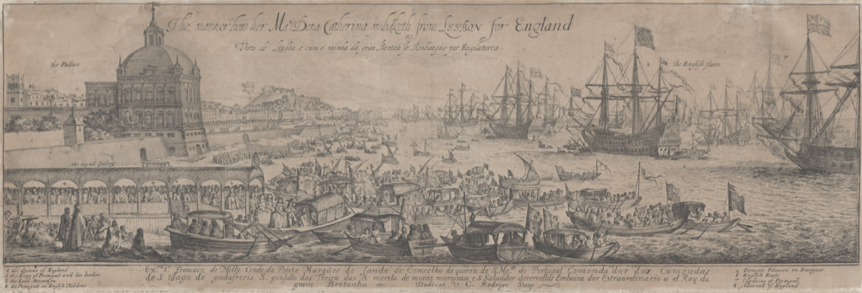
Figure 4: Embarkation of Catherine of Braganza in Lisbon. Dirck Stoop, 1662. Inv. MC. GRA.1075. ©Museu de Lisboa - Palácio Pimenta
Her dowry had been loaded onto the ship a few days before departure, as depicted in the famous painting by the Dutch artist Dirck Stoop (c. 1618-1686), signed and dated 1662, and now forming part of the collection of the Lisbon Museum / Pimenta Palace. The dowry included two million cruzados (the equivalent of 500,000 pounds). The peace treaty, a part of the Treaty of Whitehall signed on July 23, 1661, included the ports of Tangiers and Bombay, as well as free trading privileges for England. The ambassadors Edward Montagu, Earl of Sandwich, and Francisco de Mello e Torres, the Marquis of Sande, had agreed that the first million would be delivered upon the Queen’s departure (money, jewels, fine sugar, and diamonds, to be converted into cash within two months). Half of the second million was to be paid within six months of the royal wedding. The transaction of the last half million was to be completed one year after the arrival of Catherine of Braganza (Troni 2012:93-119). These data are confirmed by an inventory of the cargo of the two ships: “a thousand cases of sugar” whose “loading delayed their progress,” as seen in Fig. 5 (Relaçam 1662:7).
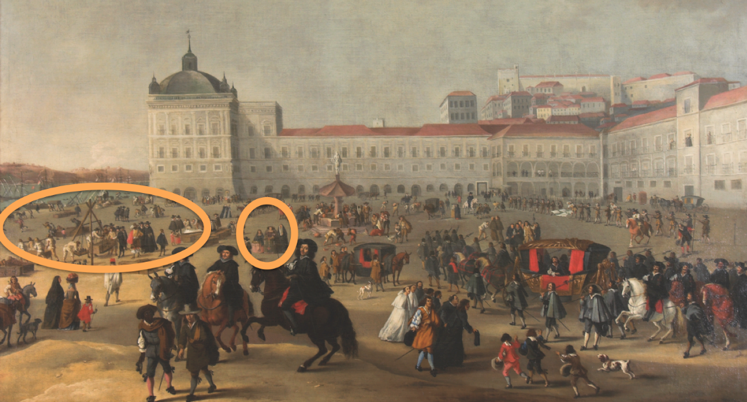
Figure 5: Public entry of the Portuguese Ambassador Francisco de Melo e Torres at the Terreiro do Paço in Lisbon, Dirck Stoop, signed Dirk Stoop Londres fecit, 1662. In the far left, one can see the embarkation of sugar. In the center, one can spot the portraits of Queen Catherine of Braganza and her mother. Inv. MC. PIN. 261. ©Museu de Lisboa - Palácio Pimenta
The Relaçam printed in London also provides an important account of the diet of the sailors of the English fleet, containing references to mugs of water or, in its absence, “biar [beer]” (Relaçam 1662:9).
The Arrival of Catherine of Braganza in England
One of the most commonly mentioned and oldest episodes relating to this subject is the cup of tea requested by Catherine of Braganza upon her arrival in Portsmouth.

Figure 6: Arrival of Queen Catherine of Braganza in Portsmouth, Dirck Stoop, 1662. Inv. MC. GRA.1077. ©Museu de Lisboa - Palácio Pimenta
This episode does not appear in any of the Portuguese or foreign documentary sources to which I was given access. In fact, it is known that the queen fell ill with a sore throat and fever, and that she was treated with “a diet of eggs, lard and chicken, because the Portuguese entourage complained about the fatty English meat” (Spencer 2007:263).
This clinical episode may have included the ingestion of liquids as prescribed by Francisco Morato Roma (1588-1670), the physician of King John IV, in his work A Luz da Medicina [The Light of Medicine], Chapter IX - “Of water and how to take it”:
[T]here are other beverages that can be used as medicine . . . of these beverages some are medicinal, such as tisanes and the juices of distilled herbs and syrups: others are foodstuffs, such as wine, milk and broth . . . There are many who avoid the nuisance of raw [sic] water and pure wine by drinking water boiled with cinnamon, anise or fennel. These are the most common beverages. (Roma 1664:13)
Aside from this advice, Morato Roma also mentioned other situations. For fever, the go-to beverages were tisanes and barley water. The tisane (or ptisane) was used to “nourish the organism, not to cool it” (Roma 1664:108; 191).
This is the simplified list of the prescriptions that were available to cure the queen of England in the 1660s. Despite the variety of herbs and treatments, the infusion of camellia sinensis does not appear in the work of the physician of the Portuguese royal household.
Tea in England
The establishment of the East India Company, or EIC (directly descended from The Company of Merchants of London Trading into the East Indies), in 1600 serves as the starting point for our analysis of the existence and trading of tea in England. The EIC was not only the main driving force behind the imports of tea to the British Isles, but also wreaked havoc in areas controlled by the Portuguese crown, leading to the loss of territories such as Syriam [Burma] (1612) and Ormuz (1622), as well as the loss of Japanese trade (1638) and the ports of Canará [Karnataka] (1654) (Campos 2007:31).
The oldest information available about the British royal family’s consumption of new beverages arriving on their shores is provided by Queen Henrietta Maria (1609-1669) in a letter that she wrote in 1655 to her sister Catherine of France, the Duchess of Savoy (1606-1663), telling her that she had a cold and that, on such occasions, she recommended a new remedy: “it is tea, a certain leaf, which comes from India” (Plowden 2001:239).
Five years later (1660), during the period of the restoration from Spanish rule, the English writer Samuel Pepys (1633-1703) recorded in his famous Diary a visit to a beverage shop, where he asked for a cup of tea, emphasizing that it was a Chinese drink.8 Seven years later, tea had already become a part of everyday family life and he recorded its potentially beneficial effects in the treatment of the cold that had afflicted his wife, Elizabeth Pepys.9
Alison Barnes’s study on the consumption of beverages, entitled “Charlie and the Chocolate Inventory,” offers a wealth of information about the English crown in the 1660s and its attitudes and behavior towards the drinking of tea. Based on a ledger from the privy purse of Charles II, the author calculated the expenses relating to the year 1666 and concluded: “Charles II was the first out-and-out English chocaholic” (Barnes 2006:2). He was also a coffee drinker, and had a specific servant who prepared the beverage. As for tea, it is known that he spent an average of six pounds per year on the drink, which contrasted with the amount devoted to the intake of chocolate (around 57 pounds in 1666 and 229 pounds in 1669).
How Did Tea Enter into Catherine of Braganza’s Everyday Life?
So far, our analysis does not seem to point to Portuguese tradition as the origin of tea drinking, a fact that is reinforced by two documentary sources. The first of these is a very recent discovery, being a piece of information from the Alfândega Grande de Açucar (Grand Customs House for Sugar), which copied extracts from every deliberation made by the General Customs. In the year 1700, Jan Vanvassen, the Purveyor of the Royal Customs and Excise, ordered as follows:
The Purveyor of Customs orders the remittance of two chests of tea from Pernambuco to the Purveyor of Caza da Índia [India House] to be shipped in a vessel of the fleet; the chests of this drug, which usually comes from East India, and all others from different sources are to be sent to the said Caza da Índia, as determined by decree of the Council dated the sixth of September [sixteen] sixty-one. Lisbon, December 16, 1700. (DGLAB/TT, 1700:151).
This unpublished testimony suggests several conclusions. It documents for the first time the entry of tea into the Casa da Índia, a customs house that is crucial for the understanding of our economic history, and whose archives were unfortunately lost in the aftermath of the 1755 earthquake. The provenance of the tea was Asia, broadly defined here as East India. Here, the definition of tea as a drug should be understood in the general sense of the word; Bluteau categorizes it as “merchandise or goods.” However, the term may also mean “any ingredient in the composition of medicines or anything of that nature” (Bluteau 1724:305-6), a statement that might explain the role played by tea leaves at the Portuguese court during the first half of the seventeenth century.
Finally, the chronology should also be highlighted. Jan Vanvassen, Purveyor of the General Customs, wrote “this drug, which usually comes from East India” in 1700, and Catherine of Braganza had already been residing in Lisbon since 1693. However, the decision of the Council of the Treasury, which had mandated that tea should be imported exclusively via the Casa da Índia, dated from 1661. It seems that, before then, the product identified as a drug had not been subject to any specific legislation. What is the significance of this order? Could it have been a mere indication of a decree for a specific warehouse (Casa da Índia) in order to control customs duties, or does it correspond to an increase in trade which called for its own regulation? Could the legal framework for tea help us to document the widespread beginning of tea consumption over a period of fifty years after Friar Gaspar da Cruz had written about it?
As seen, among the goods agreed upon in the Treaty of Whitehall for the payment of the wedding dowry, tea was not listed anywhere in the ship’s cargo manifest. Furthermore, the analysis of the commission made by the queen, and the goods that travelled on board the ship Saudade, a regular line between Lisbon and London, may help reinforce this thesis. The goods that arrived in London were “oranges, marmalade, wine, porcelain amphorae containing water, and jugs of sweet water” (Flor 2012:25). Once again, it should be emphasised that there is no sign of any boxes containing camellia sinensis, although it had been subject to the payment of duties at the Casa da Índia at least since 1661.
As a curiosity, Father Sebastião da Fonseca, the author of Relaçam das Festas de Palácio, e grandesas de Londres [An Account of the Palace Festivities and the Grandeurs of London] a publication that mentions the public arrival of Catherine of Braganza at the city of London in 1662, puts these words into the mouth of the God Neptune:
A tribute I exact of you10
. . .
From China rough diamonds,
from India sapid clove,
fine sugar from Rio
good tobacco from Brazil.
In other words, the extolled products are diamonds, sugar, cloves, and tobacco, which were probably the most significant goods for the Portuguese trade at the time.
At this point, one should investigate how the beverage entered into Catherine of Braganza’s everyday life. The first concrete reference to tea among the Portuguese entourage in England is found in the correspondence of ambassador Francisco de Melo Manuel da Câmara, who constantly complained about his health.
In fact, during ambassador Francisco de Melo’s years in Northern Europe (1662-1678: thirteen years in England; two and a half years in the Netherlands), his letters to Duarte Ribeiro de Macedo, the Portuguese envoy to France, complained about his health problems and gave an account of various remedies from thermal water to bloodletting and pills. The period of 1673-74 is rich in references of this nature as de Melo goes to great lengths to cure his illnesses, including the use of donkey milk (Melo, 1674). De Melo followed the remedies of the time, taking into account, above all, Francisco Morato Roma’s advice for the treatment of so-called “ethical fevers” (Roma, 1664:70). In a letter to Duarte Ribeiro de Macedo, written in 1674, Francisco de Melo finally mentions the consumption of tea as a last resort:
My health is still poor and the best is to take fewer remedies because I have decided to accommodate the ailments instead of the medicine. The two that you suggest do not seem bad, except that rather than water I should take Thé [tea], which I do after supper as not only is its water hot, but it also contains the virtues of the herb, which is good for the head and the stomach. (Melo, 1674)
From the tone of the letter, one can see that the ingestion of the beverage was not a habit known among the Portuguese, especially not for its medicinal properties, because Duarte Ribeiro de Macedo was informed by the ambassador in England of a variation of hot water taken after dinner, to which herbs were added. Also noteworthy is the fact that Francisco de Melo does not use the Portuguese term chá but rather the English word “thé” Two years later, in a letter to the Duke of Cadaval, Father Manuel Dias reveals the same knowledge of tea, which he mentions together with coffee and chocolate, also using the English term for it [te] (Rau 1962:25).
Although the use of tea in Portugal is documented only after 1661, the detail of the nomenclature is highly relevant. The specialized bibliography expresses that the consumption of tea has its roots in the Eastern Himalayas and across Northeast India, particularly in Assam. In chronological terms, it harks back to the Eastern Han Dynasty (206-220), although it was popularized during the Tang Dynasty. The first mention of the ideogram for tea is by Guo Pu (276-324). However, the lexical item cha only appeared from the seventh century onwards (Ceresa 1993:193-25). During the first half of the seventeenth century in England, the word in use was ‘cha,’ which was employed at the Macau trading post (‘tcha’ or ‘chaw’). As English merchants moved into territories further east along the Chinese coast (Fujian province), they came into contact with local traders, whose dialectal word for tea was ‘thé.’ The same acculturation occurred with Portugal’s Dutch rivals (Dahl 2013: Chapter 138).
As the aforementioned letter shows, the Portuguese ambassador to Holland uses the term thé. In our opinion, if the habit of drinking tea had been widespread in Portugal, the exchange between Francisco de Melo and Duarte Ribeiro de Macedo would have employed to the Portuguese vocabulary (influenced by the trade with Canton and Macau, rather than Amoy) (Dahl 2013: chapter 138), and one would not have been surprised to come across a more domestic tone in expressions such as “our tea” or “the tea from our country,” precisely as found in the praises of water exchanged between the Marquis of Niza and Vicente Nogueira.
Taking these data into account, one is able to reinforce the idea that the consumption of tea at the English court was a gradual phenomenon, and that (like milk) the beverage was originally taken for medicinal purposes. Francisco Manuel de Melo’s scant knowledge of this beverage permits the hypothesis that the perception of the queen of England was identical. One should bear in mind that Francisco had been her chamberlain and that his sister, the Countess of Penalva, was assigned the same task until 1681, so that the information circulated in the queen’s household, and either tea was recommended by the royal physicians or its consumption imitated the social habits fostered by the English sovereign.
In this context, it was natural that the consumption of tea should enter the court of Catherine of Braganza as a medicinal habit, as confirmed by the Portuguese ambassador and by Rafael Bluteau himself a few years later:
Chá or (as others prefer) Tehâ, is a word from Japan, from whence the best Chá comes... good Chá has remarkable virtues, it brings joy to the spirit, causes vapours to subside, fortifies the brain & the heart, helps digestion, purifies the blood, stimulates urination, expels somnolence & some credit it with the happiness of the Chinese and the Japanese, who both know nothing of the illnesses that are so common in Europe, such as Stone and Gout. (Bluteau 1712:264)
Looking at the historical framework under analysis, it is easy to understand how tea entered into the everyday life of the Portuguese queen in London, albeit not as a five o’clock ritual, but rather a fashion that emerged in the nineteenth century at the hands of a lady-in-waiting of Queen Victoria: Ann Russel, the seventh duchess of Bedford (1783-1857). This fact is proved both by the historiography of the Duchess of Bedford and that of Catherine of Braganza. In fact, in 1680, as the Popish Plot unfolded-and the queen was accused of being linked to a conspiracy to assassinate the king and impose the Catholic faith in England-an account was published in France entitled La vie de Catherine de Portugal, which describes in detail the queen’s daily routines, from five o’clock in the morning (the time she rose from her bed) until she retired to sleep, and there is no reference to tea drinking at five o’clock in the afternoon. Instead, at that hour, Catherine would be engaged in praying the Rosary, together with other ladies in her private prayer room (Flor 2012:294).
Therefore, with its virtuous aura, tea was quickly adopted by the queen, who, in the years following the death of King Charles II, suffered from symptoms that were treatable by the beverage from China: “Her Majesty has had some stomach complaints in these past four or five days . . . the profound sadness and melancholia in which she is often immersed are the cause of indigestion and occasional indisposition” (Rau 1962:125).
Edmund Waller’s Poem and the Undoing of a Tradition
In order to clarify once and for all the association between Catherine of Braganza and tea, I turned to an international bibliography on the subject. The Empire of Tea,11 published in 2009, offered a new research path relating to the rereading of Edmund Waller’s work.
The study is being carried out by two American professors-Tim Raylor and Michael Parker-whom I have contacted, and who offered to discuss our doubts with me and to share their unpublished data, so that one might arrive together at an understanding of the origin of the tradition.12 The authors had access to manuscript editions that were still extant in a family estate and realized that there is a confusion between the poem “To the Queen, upon her Majesty's birthday, after her happy recovery from a dangerous sickness,” written in 1663, and the poem “Of Tea,” which was only included in its posthumous edition of 1690, but did not feature in the 1668, 1682, and 1686 revisions. For this reason, the poem “Of Tea” must not have been written until the 1680s. Some verses in “Of Tea” are repeated in another poem “Queen Catherine on New Year’s Day,” dated 1683. By reformulating the date of the poem from 1663 to 1683(?), the sense of novelty that had supposedly been brought by Catherine of Braganza from Portugal to England in 1662 vanishes entirely, as does the weight of eastern culture that hung over her dowry and was repeatedly overestimated by eighteenth and nineteenth-century historiography, as seen.
Together with Edmund Waller’s poem, the new data suggest that the beverage soon reached beyond its medicinal properties to become a synonym for comfort and the appeasement of “melancholia.” Waller speaks of keeping “the palace of the soul serene,” something dear to Catherine of Braganza, who, unlike Charles II, did not seek the exotic effects of chocolate. After the king’s death, the biography of the queen mentions her nocturnal walks as well as her retreats spent in an apothecary’s small country cottage in Islington (Casemiro 1956:461). Could this also be a sign of the true philosophy behind the tea ceremony, “which invited individual reflection and the achievement of a state of inner harmony through an intimate contact with Nature?” (Prazeres 2012:88).
By writing this poem about tea, Waller not only extolled the beverage (he was himself an enthusiastic tea drinker, appearing in a list of tea connoisseurs) (Ellis; Coulton; Mauger 2015:36-39), but he also documented its presence in the queen’s everyday life. This public praise of a royal habit led to its becoming a subject of curiosity and, therefore, an object of imitation. For example, in 1664, Catherine of Braganza had been portrayed as Saint Catherine by the Catholic painter Jacob Huysman (c. 1633-1696), a gesture that was immediately copied by the ladies of the English court. For this reason, I do not discard the possibility that the same practice was applied to tea drinking, which the queen embraced after arriving in England.
The queen’s fondness for tea drinking is revealed in the inventory of her belongings, in which the equipment for the preparation of the beverage is clearly listed (it was part of the estate at Bemposta Palace, where she died in 1705) (Rau 1947:1-98). The variety of utensils (tableware from ‘India’ [even those who came from China], including cups and saucers, pots, kettles, etc..., along with the accompanying furniture) shows how the queen’s daily tea ceremony had evolved into a definition of pancultural art (Wilson, 2018:33-44).
Conclusion
The current available knowledge allows to state as follows, regarding tea and the habit of drinking it in Portugal: tea had been known about in the country at least since the second half of the sixteenth century, as confirmed by Dominican and Jesuit accounts. However, the first reference that has so far been found among the customs records is from 1661, when a shipment was sent from the General Customs to the Casa da Índia. A few months later, Catherine of Braganza left for England and the products in her dowry included only sugar. Tea was already traded in England and was highly appreciated for its medicinal properties (for treating colds and digestive problems). Charles II’s household accounts list greater expenses with chocolate than with tea because the king was aware of the former’s benefits in terms of energy and vitality.
English society always followed the habits of their sovereigns. Arriving in England, Catherine of Braganza had herself portrayed as Saint Catherine by the painter Jacob Huysmans, thus launching a fashion among women wishing to associate themselves with the queen (even to the point of naming their daughters after her) as a way of complimenting and pleasing the sovereign. The habit of tea drinking must have followed a similar process. It made its way into the queen’s everyday life due to its medicinal properties, and it was regarded as a virtuous beverage due to its physical and spiritual benefits. Catherine of Braganza began the fashion of tea drinking, going on long walks after supper and seeking quiet locations to commune with nature. This behavior began in the 1680s after the death of Charles II, a time of deep melancholy for her, according to her closest servants. American specialists have shown that Edmund Waller’s poem dates from that period, not from the 1660s. The poet praises Catherine’s habit, which had changed from medicinal to virtuous due to its ability to cure melancholy and bring serenity to the soul.
In Portugal, tea is absent from the agasalho culture from the second half of the sixteenth century until the late seventeenth century. In fact, Portuguese habits included herbal preparations and tisanes for colds, and fortified or scented waters for cooling the body, as reported by many foreign visitors to sixteenth-century Portugal.
Regarding the theme of this study, it is now possible to say with greater accuracy that Catherine of Braganza generalized the fashion of drinking tea in England several years after her arrival and introduced the habit of drinking tea for pure pleasure when she returned to Portugal in 1693. This reversal of traditional history does not diminish the queen’s biography. Although she was not responsible for introducing tea drinking into England as a habit of civility brought from Portugal, one should not lose sight of her true role in the history of Portugal. Her marriage to Charles II of England, a nation hostile to Catholics like her, secured English military assistance and thus ensured our lasting political independence, something that many had deemed impossible.













